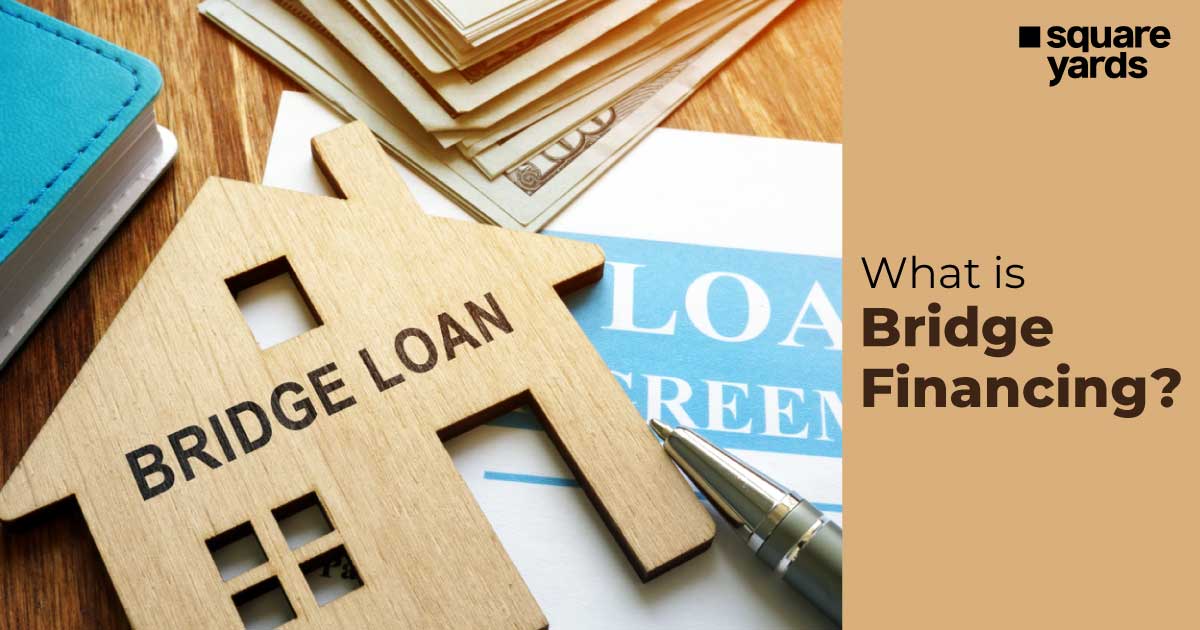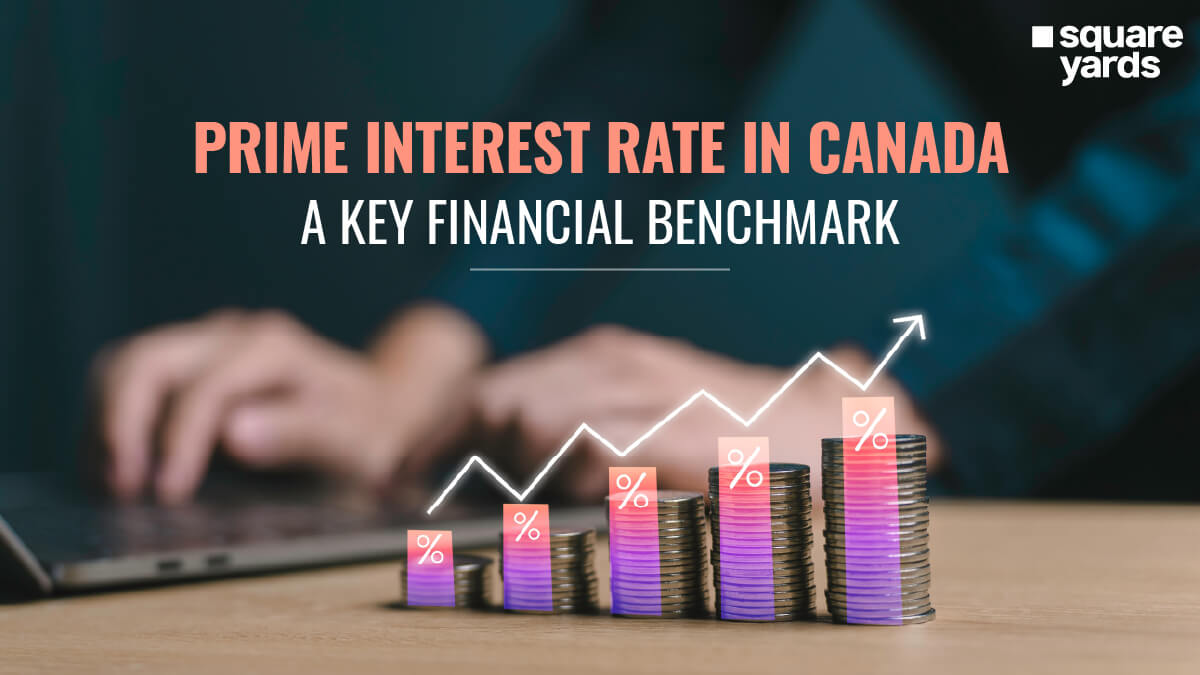You’ve planned to shift houses and move places. You finally find a great new condo and put your old house on sale, with a plan to buy this new condo using the proceeds from the sale of your old house. Extremely logical. Fully practical. We’re good till now. But here comes the catch. Your old home’s not selling now, and you’re left without any funds. And since you have no funds, the new booking is getting delayed, and delayed, and delayed. In this financial vacuum, enters bridge financing in Canada. As you must have guessed by the name, a bridge loan is a gap-covering financial aid. In a situation like the one above, a bridge mortgage would temporarily give you the necessary funds to book that new condo. Once the old home sells, you repay this loan with that money. Simple!
You see, different loans come into our lives at different points in time. Each has its own purpose and offers a unique perspective on life. We don’t know why we’re suddenly philosophising loans, but we do know this – a lack of funds should not rob you of your chance to own your dream home. So, stay tuned with us as we open up this lifejacket of a loan for you and weigh its pros and cons in complete detail.
Friendly advice: Don’t let that condo slip away!
Defining Bridge Mortgage
Bridge financing in Canada is a temporary but immediate solution to enable homeowners to purchase their next home, even before the current property has been sold. Not just homeowners, businesses also use this financial tactic to cover short-term cash flow needs. These loans generally last for 90 days to a year. The whole idea of a bridge mortgage is to fill the gap between an imminent expense and the future income expected to cover it. In that sense, it acts as a buffer that helps smooth transitions.
A bridge loan evaluates the loan amount based on your current home’s equity. It’s a secured loan, and the money is offered against your existing house. The loan amount is primarily used to cover expenses like a down payment, to ensure the deal doesn’t slip by. We must keep some key aspects of bridge financing in mind. Even though it’s an aid, it’s a loan at the end of the day. It will have its own benefits and limitations, all of which we are going to discuss further ahead in the blog.
The Different Types of Bridge Loans

Bridge Loan is an umbrella term. While there are a range of bridge loans available, here are some of the most common types of bridge financing in Canada:
Open Bridge Loans
Open bridge loans have an unfixed payoff date. While it is clear that the loan will be repaid in the near future, exactly when it’s going to be repaid is left open-ended. There are two sides to this loan. While it offers a lot of flexibility to the borrower, it also charges a high interest to cover the risk of uncertainty for the lender. Lenders who wish to secure themselves against such ambiguity sometimes deduct loan interest from the loan advance.
Closed Bridge Loans
Closed Bridge Loans are defined by their clear and predetermined repayment dates. The risk for the lender is significantly reduced, and a clear exit strategy is in place. Closed bridge mortgage is about clarity and security. Since there is greater assurance, it also costs less as lenders often charge lower interest rates on these loans.
First Charge Bridging Loan
In a first-charge bridging loan, the lender gains priority over the property. If a default situation arises, the bridge loan lender will be prioritised over all others in terms of credit settlement. With favourable terms for the lender, this loan is available at relatively lower rates of interest in comparison to the second-charge bridging loan.
Second Charge Bridge Loan
In this case, a bridge lender will be due only after the existing first-charge lender is cleared off. The interest on these loans is comparatively higher. A quick thing to keep in mind here is that a bridge lender has the same repossession rights in a second-charge loan as in a first-charge loan.
Advantages of Bridge Mortgage

Bridge loans have many advantages. Here are some of the top benefits of using this financial aid:
-
- It’s a great way to prevent a new opportunity from slipping by. Bridge loans can help you buy a new home without worrying about selling your existing one.
- Much less time-consuming than a traditional loan. These are short-term loans with secured collateral and are quickly approved by lenders.
- These loans give enough buffer to borrowers to arrange for necessary funds to repay the ongoing credit.
Disadvantages of Bridge Mortgage
Bridge loans can be complex and costly. Check out some of its disadvantages below:
-
- The terms of a bridge loan can be slightly complicated. Whether you’re a business owner or a homeowner, the conditions of a bridge loan differ from case to case.
- Bridge loans generally charge a higher rate of interest than traditional loans.
- If the sale of an existing home doesn’t come through, you could come under additional financial strain.
To Bridge or Not to Bridge, That is the Question!
Now that we’ve got a complete hold of bridging finance in Canada, it’s important to know when borrowing a bridge loan is right for you. You can look towards bridge loans as a feasible option when:
-
- You Wish to Buy a New Home Before Selling Your Current One: We’ve emphasised this repeatedly.: It’s not every day that you find a dream home. But when you do, bridge loans help secure greater chances of making it yours.
- You’re Ready to Renovate or Construct: Bridge loans can also help you start your home renovations. If your finances are tied up, use this loan to commence the work and comfortably pay it back once you’ve arranged the funds.
- You’re Going For Business Expansion: Say you see an opportunity to expand your business by acquiring a small competitor or buying new equipment. Bridge loans can offer a quick financial injection to capitalise on this opportunity before it slips away.
- You Want To Keep Your Cash Flow Going: In case of temporary cash flow issues, a bridge loan provides the necessary capital to manage these short-term financial challenges. Therefore, ensuring seamless continuity of business operations.
Summing It Up
A ‘bridge’ takes us from ‘where we are’ to ‘where we want to be’. As we conclude this piece, it’s important to see bridge financing mortgages similarly. It’s about smooth transitions and close calls. This financial aid can be used for various purposes, from home buying to business expansion. But just like every other credit instrument, it has merits and demerits. Once you’ve assessed your financial situation and calculated all the possibilities, go for a bridge mortgage and make the keys to that new home yours!
You May Also Read
|
Guide To Mortgage Prepayment Penalty |
|
|
All About Porting a Mortgage |
|
|
Know The Refinancing Mortgage Canada |
|
|
Understand Letter of Employment For Mortgage |
Frequently Asked Questions (FAQs)
Financial institutions like banks and other lenders offer bridge financing in Canada. Every lender offers a loan on different terms, so it's essential to shop around and see which lenders fit your needs.
Bridge financing in real estate and businesses is generally quicker than traditional loans. Depending upon your application, the lenders generally approve these within a few days to a few weeks.
Multiple factors affect your loan approval chances. Key factors in this process are your credit history, current home's value, and exit strategy.
The primary cost of bridge financing in Canada is interest rates. Borrowers can also pay several administrative and legal fees. Where can I obtain a bridge loan?
How much time is required to secure a bridging loan?
What’s the eligibility for securing a bridge loan?
What are the costs associated with bridge financing in Canada?











